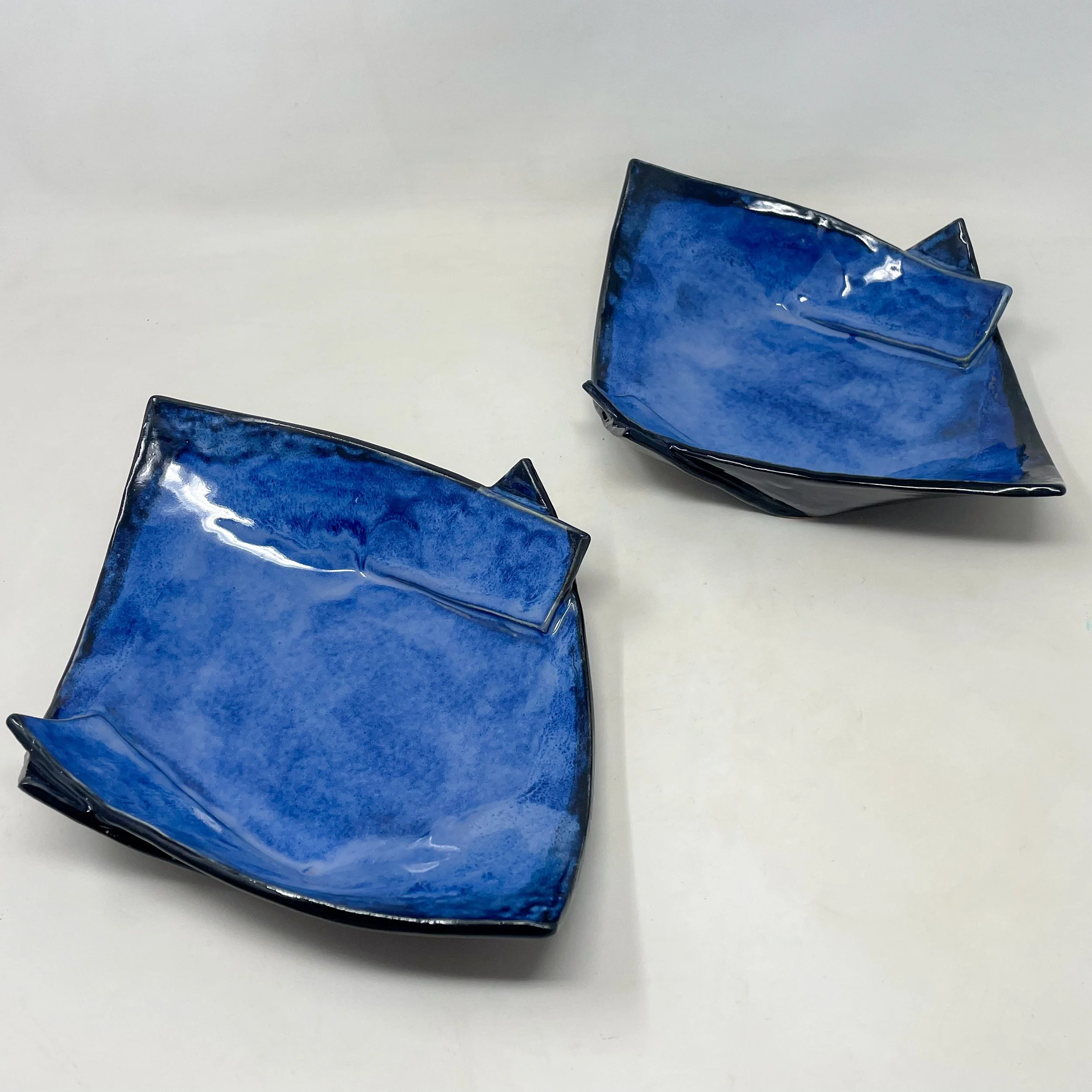Learning Gaps in High School
The Origami Bowl/Plate project is an in-person lesson that teaches high school ceramic students who previously have experience working with clay but struggle to create dishware that does not crack, warp, and/or remain stable when resting on flat surfaces.
This instruction is relevant to art educators whose students have a limited understanding of the approach needed to create ceramic dishware. It should be delivered in a blended model that includes one-on-one instruction and classroom training.
Who are the learners?
ANALYSIS: High school Ceramic students have a limited grasp of the changes needed in the process of creating ceramic dishware and the reasons behind the problems. These learners can demonstrate the three key skills in Ceramics (coil, slabs, and pinching) for sculptural objects. The gap in understanding emerged because they have only created sculptural items that are not meant for practical use.
The learning activities are separated into two processes.
The first learning activity uses experiential learning as students explore different ways dishware can be designed through simple cutting and taping of paper. This allows them to pursue a design of their motivation, recognize areas where warping happens in the piece, and see the design of the object before accessing the clay.
The second learning activity is the making of the Origami Bowl/Plate broken down into 6 steps. This activity will offer in-person demos on how/when to compress and visual examples of how to greenhouse a piece in a classroom setting. In the Instructional Map below, there is an outline showing the timeline and activities in order. Below is a general breakdown of the 2 activities.
How should the instruction be delivered?
DESIGN: The chosen method for this design was blended learning; The combination was classroom training with an instructor and self-paced e-learning. These instructional methods allowed for both informal and formal knowledge checks and assessments to take place during the making process. These checks happened from a peer, educational technology, or the instructor. The needs of the learner can be addressed immediately, and the SME can reassess and adjust the material based on the application of skills being taught and executed.
This instructional map serves as a visual blueprint or roadmap for learning and instruction that was implemented. Content for other learning materials were designed in Google Suite.
Below you will find developed materials that include a presentation and facilitator guide.
DEVELOPMENT and IMPLEMENTATION: The overall design intends to teach students how to recognize when they should compress/refine their pieces, which tools to utilize for this process, and how to create a greenhouse for their dishware to control drying times. Ideally, students will be sitting in groups so that they can scaffold and support one another during the making process. Students will build on previous knowledge to implement new techniques for controlled drying times and improved compression skills to create final products.
This project includes the following materials:
International Baccalaureate Visual Arts rubric
Instructor's guide in the form of a lesson plan
PowerPoint with speaker notes, video links, photos, and step-by-step instructions.
The PowerPoint presentation can be used by instructors to create a sample(s) before presenting this lesson to learners to support differentiation.
Origami Bowls/Plates
Evaluation
The formative evaluation was primarily through focus groups, observations, and prototype testing. In the pilot test, 41% (15) of the students were experiencing cracking due to quick drying. About 30% of learners were experiencing warping in their pieces as well. Inconsistent attendance attributed to this issue because students would miss some of the instruction which was not addressed properly at that time. After asking when the cracking and warping appeared, it was noted that going into day 3 and after finishing the object, the cracks would appear. Based on this information, four changes needed to be made.
Summative: After the rubric was used to assess the learners’ functional dishware, it was also used for quantitative data for the instructor. If an issue occurred more than 25 percent of the time in the deliverables of the learner, I had to consider how to change the instruction in future iterations to resolve this matter. After the adjustments of the pilot test, I concluded that the overall learning was successful. Based on the findings,
A/B grade - 84% (80) of the 95 students were able to deliver and create functional dishware with minimal warping and cracking.
C grade - 4 students
D grade- 7 students
F/No submission - 4 students
No students experienced warping during the final drying process.


